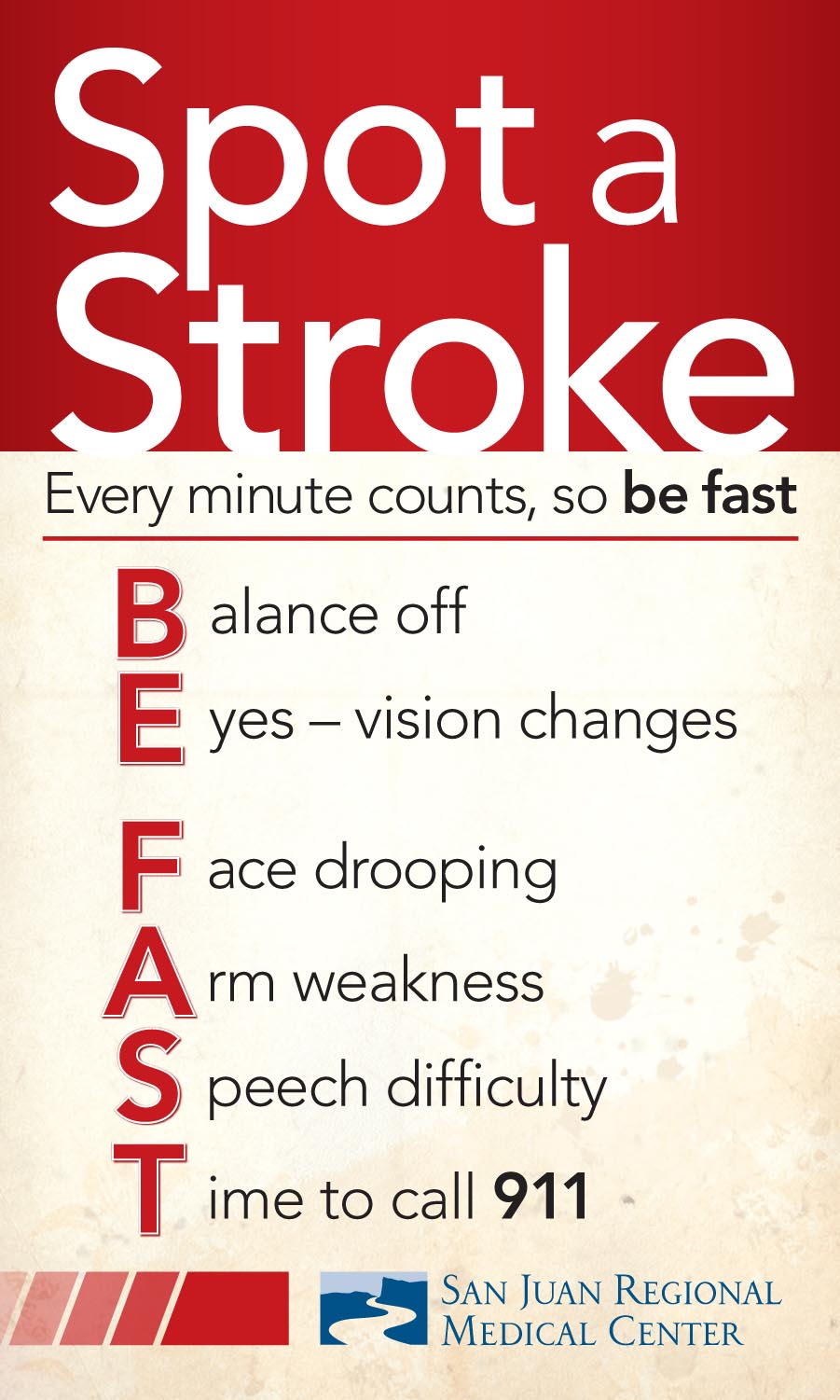Do you know your risks? This page is dedicated to providing you with information and resources for making healthy lifestyle choices to reduce your risk for stroke.

What is a stroke?
A stroke, or brain attack, happens when blood flow to your brain is stopped. It is an emergency situation.
The brain needs a constant supply of oxygen and nutrients in order to work well. If blood supply is stopped even for a short time, this can cause problems. Brain cells begin to die after just a few minutes without blood or oxygen.
When brain cells die, brain function is lost. You may not be able to do things that are controlled by that part of the brain. For example, a stroke may affect your ability to:
- Move
- Speak
- Eat
- Think and remember
- Control your bowel and bladder
- Control your emotions
- Control other vital body functions
Risk Factors for Stroke: Evaluating the risk for stroke is based on heredity, natural processes, and lifestyle. Many risk factors for stroke can be changed or managed, while others that relate to hereditary or natural processes cannot be changed.
Higher Stroke Risk for Women: Stroke affects more women than men and is the third leading cause of death in women according to the American Stroke Association. Pregnancy increases the risk of stroke in young women, and pregnant women with preeclampsia are at a great risk for stroke later in life. Birth control pills also increase the risk of stroke as well as hormone replacement therapy. Women suffering from migraines with aura who smoke have a higher risk of stroke than women who don’t smoke. Atrial fibrillation significantly increases stroke risk and is more common in women. Read how women with these risk factors can lower their risk of stroke at strokeassociation.org
Find out how much you know about strokes and what causes them.Take our stroke quiz
What is normal blood pressure? Normal blood pressure is defined as a reading below 120/80; this is the pumping pressure that keeps blood circulating normally throughout the body. Anything higher than those numbers is too high although hypertension is usually defined as consistent readings of 140/90 or above. Blood pressure varies, of course, from minute to minute depending on what you’re doing, your level of stress, the time of day, the outside temperature, and many other factors. A diagnosis of high blood pressure, as a result, is based on an average of many readings over a period of time. Although the nurse may inflate the cuff on your arm at every doctor’s visit, this is merely a brief snapshot of your actual blood pressure.
Do you know your risk factors for high blood pressure? Take the Blood Pressure Quiz
Tips for Monitoring Your Blood Pressure. The American Heart Association stresses the value of blood pressure monitoring outside the doctor’s office. Home blood pressure monitoring can be a good way for you and your doctor to learn how your blood pressure changes during the day.
What is a Brain Attack? The effects of stroke (brain attack) vary from person to person based on the type, severity, location, and number of strokes. The brain is extremely complex and each area of the brain is responsible for a special function or ability. Learn more about the effects of a stroke.
Lifestyle Changes: Diet and Exercise Adopting a lifestyle that includes regular physical activity and a healthy diet can help lower your blood pressure and reduce your risk for stroke and heart disease.
Dietary Approaches: Stop Hypertension. The (DASH) diet, has been shown to reduce blood pressure. This diet is low in saturated fat, cholesterol, and total fat. The diet emphasizes fruits, vegetables, and low-fat dairy products. Learn more about the DASH Diet.